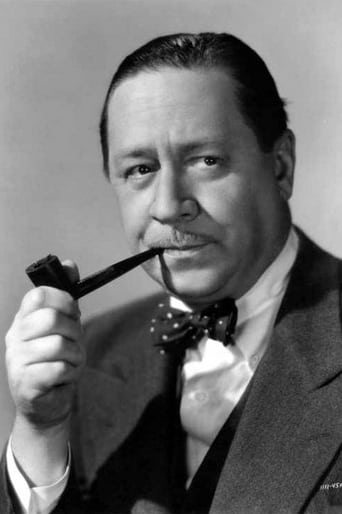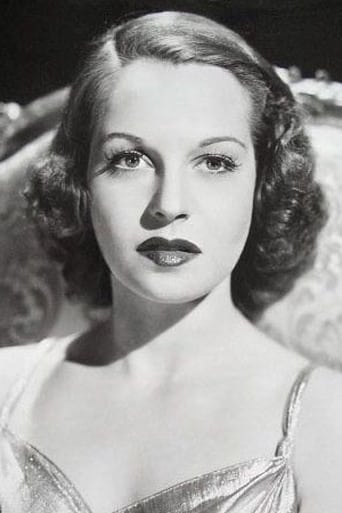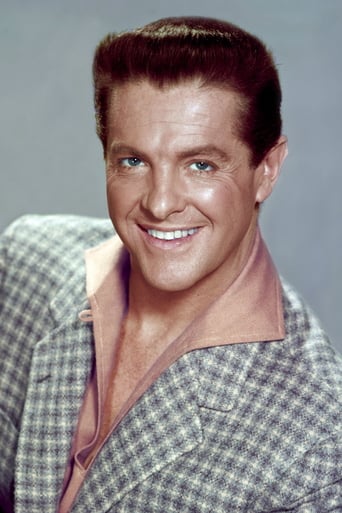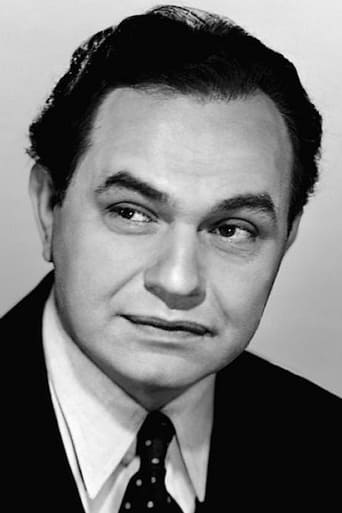Spidersecu
Don't Believe the Hype
Konterr
Brilliant and touching
Infamousta
brilliant actors, brilliant editing
Whitech
It is not only a funny movie, but it allows a great amount of joy for anyone who watches it.
tomsview
An intriguing movie, more for what it could have been rather than for what it is."Flesh and Fantasy" is made up of three loosely connected segments – from stories by three different authors. They unfold as tales of the supernatural told by Davis (David Hoffman) to 'humourist' Robert Benchley in a series of linking sequences.The first story is set in New Orleans during Mardi Gras. A plain young woman, Henrietta (Betty Field) receives a beautiful white mask from a stranger. After she attracts a young man, Michael (Robert Cummings), she performs an unselfish act, revealing her inner beauty to him without the aid of the mask. This sequence has a dreamlike quality – the artificiality of the studio sets actually gives it a sense of otherworldliness.The second segment takes place in a moody night-time London. When Marshall Tyler (Edward G Robinson) is told by clairvoyant (Thomas Mitchell) that he will murder someone, he becomes so anxious waiting for it to happen that he attempts to kill two people at random before confronting the clairvoyant again.The third segment has the least connection to the supernatural. A high wire artist, Paul Gaspar (Charles Boyer), loses his nerve performing a dangerous feat, When he dreams about a strange woman (Barbara Stanwyck) with distinctive earrings, he meets her on board a ship bound for New York. He falls in love and his confidence returns, but an unexpected problem separates them again.Although the three segments have a definite style, the whole thing is let down by the linking sequences starring Robert Benchley. These seem totally out of character with the carefully crafted stories directed by Julien Duvivier. It's almost as though they are by another hand altogether. They actually make light of the segments we have just seen, and Benchley's brand of humour hasn't really travelled all that well over the decades.When I sought more information about the movie, I found that a fourth segment – much darker in tone – had been filmed, but apparently the studio scrapped it and then added the Benchley touch.Each segment was designed to flow into the next, and although Duvivier turned the deleted segment into another film called "Destiny", "Flesh and Fantasy" would have had an entirely different mood.Back in the day, studios seemed to feel that films with a supernatural theme needed a lot of explaining, and anthology films often had linking sequences. It was almost as though they didn't think audiences would understand a film that was too abstract. So Duvivier's intriguing, moody film got hit with the mundane stick.The result is still interesting, and the opportunity has long gone for the film to be restored to the original vision, but it's an intriguing thought nonetheless.
blanche-2
I finally obtained "Flesh and Fantasy" from someone who taped it off of television. What television, I don't know, since I have never seen it on TCM. And God forbid that Universal should release it on DVD. Given that there are only 11 reviews, it doesn't appear that it's seen too often.Charles Boyer coproduced this film, and one assumes that Julien Duvivier and he were friends, and he got Duvivier to direct. Good choice as he does an excellent job. Also, Duvivier had directed the successful anthology film, Tales of Manhattan.The film begins with a discussion (by Robert Benchley and another man) about the truth of dreams, fortunetelling, superstition and the like. Then three stories, ostensibly from a book, are told. The first is a story by Ellis St. Joseph, starring Robert Cummings and Betty Field, about a bitter, mean, ugly woman who dons a mask on Mardi Gras that makes her look beautiful.The second story, Lord Arthur Savile's Crime, is by Oscar Wilde, about a fortuneteller (Thomas Mitchell) who tells a man (Edward G. Robinson) that he is going to commit a murder. The ending of this story was changed due to the Hays Code.The third story, by Laszlo Vadnay, flows from the second one as The Great Gaspar (Charles Boyer) witnesses something at the end of the previous story. Gaspar is a high wire artist who dreams that he falls, and in his dream, he sees a screaming (Barbara Stanwyck) who is wearing unusual earrings. He then meets her when the circus troupe is sailing abroad.Each story explores some question: can fantasy become reality, can a prediction become a self-fulfilling prophecy, are dreams real warnings? Very entertaining, with good performances and direction, with three good stories.
Pamela-5
The second of the three tales in this movie is, indeed, the strongest, and the most memorable.Another reviewer wrote that Noel Coward wrote the second of the three mini-movies within this one movie. Not so!!! It was based on an 1891 Oscar Wilde tale called "The Crime of Lord Arthur Saville." Although both gentlemen were British, both writers, both gay, Coward was born at about the time Wilde was sentenced to jail and later died, so the times in which they lived were very different! Plus, obviously, their styles of writing are very different.Just a little film history about the second tale:made into a U.S. theatrical movie in 2006 ("First Snow"); made into a Russian TV movie ("Prestuplenie lorda Artura") in 1991; made into a French TV movie in 1968 ("Le Crime de Lord Arthur Saville"); made into a British TV movie in 1960; made into a U.S. TV episode of "Suspicion" in 1958; enfolded into a theatrical movie in the U.S. in 1943 ("Flesh and Fantasy") made into a theatrical movie in France in 1921 or 1922.Enjoy!
telegonus
Flesh and Fantasy is a rare forties Hollywood attempt at an art film, and while I cannot say it's wholly successful, it's a good try. Directed by the highly esteemed French director Julian Duvivier and produced by the highly esteemed French actor Charles Boyer, it consists of three stories of the supernatural, told to Robert Benchley, in a framing device, in what appears to be a men's club. The first tale concerns a homely girl who is turned beautiful by the power of a mask sold to her by a strange little shopkeeper. It's a slight, lovely fable, well-acted by Betty Field and Bob Cummings. In the second story we find Edward G. Robinson in London, where a fortune teller reveals to him a fate he tries vainly to escape. The third segment, despite the presence of Charles Boyer and Barbara Stanwyck, is rather mediocre, and concerns predictions in a circus setting. Of these three tales the middle one, an adaptation of an Oscar Wilde story, is by far the best; it is also visually the most appealing. Duvivier brings a Gallic gentility to the film, and his compositions are excellent and always fastidious. One gathers that the movie must have been a labor of love for producer Charles Boyer. All the actors are in top form, and the picture does not at all feel like a product of the Universal studio of this period. Flesh and Fantasy is one of several wartime movies that dealt with the issues of death and fate, which were obviously hanging heavier than unusual on peoples' minds in those days. Off the top of my head I can think of Here Comes Mr. Jordan, I Married a Witch, A Guy Named Joe, Between Two Worlds, The Uninvited and The Picture Of Dorian Gray. Death, rather than dying, was a feature of most such films, which as a rule steered clear of anything grisly, which is to say reminiscent of battlefields. Flesh and Fantasy is quite good at this. With its soft chairs, cobbled streets and a convincing London bridge thrown in for good measure, it makes facing up to one's fate feel as comfortable and delicious a proposition as attending a masquerade ball.






